I want to thank both Scott and Brad for the invitation to compose a blog entry for what I consider to be the most informative photography/creative blog on the web today. Scott is a true pioneer within the creative industry, and his site is always the one I look to for answers when I am lost. So, when Brad sent me an email asking me to guest blog, as many of you might imagine, I was about as jacked as I have ever been.
Soon after, I began to realize the heavy burden of following in the footsteps of Joe McNally, Bill Frakes and all those photographers whose work I have on a pedestal so high I could not reach it if I were on a trip to the moon.
All kidding aside, those that know me well will tell you that I have never been an out-front, in your face guy; I have always wanted my work to speak for itself, so if you have never heard of me or seen my work, no fear… After reading this Blog/Book, you will know why… I am Paul Abell, a relatively new photographer mostly known for sports photography.
For the last several weeks, I have contemplated my approach and how I might present something different from those that have come before me, and once again, reality set in… What could I possibly share with you all that these amazing photographers have not already shared? Conclusion: I did not find a thing…
Scott, thank you for thinking enough of me and the work that I have done to ask me to share it here. To those that are reading this, thank you for allowing me to share my work and story with you… Most of all, best of luck in all live and all your creative endeavors.
MY PATH TO PHOTOGRAPHY
My journey as a photographer is more than likely different than most photographers. It began just eight years ago, this April, while working as a graphic designer for an arenafootball2 (af2) team named the Macon Knights.
Today, the Knights are no longer a team in operation, but I credit their ownership for giving me every opportunity to succeed at the highest level.
In 2003, I had the opportunity to work with multi-talented, award-wining creative director, Kurt Tausche. Over his career, Kurt has won more than 500 national & international awards, and he was brought in by the Knights to help create a sports brand second to none in any level of professional sports.
Kurt and I hit it off from the start, and I credit him for taking the time to work with such an unknown photographer; Looking back, I am not sure how we accomplished so much, but I credit the final award-winning productions to his abilities as a national, award-wining creative director. With all of Kurt’s award-winning projects, he could have easily refused to work with me, but for whatever reasons he did not, and I was awarded the opportunity to work alongside one of the top creative directors in the advertising industry.
Over my 5 years with the Knights, I worked on and produced over 30 award winning designs & photographs, taking home photo of the year 2 times, Media guide of the year 5 years, as well as numerous other local Best of Show, Gold & Silver ADDY Awards.
SAMPLE DESIGN: 2003 Macon Knights Pocket Schedule, design & photo by Paul Abell
This was one of the award-winning designs I produced shortly after beginning my work with Kurt Tausche. Prior to the season, Kurt and I scheduled a photo shoot with many of the Knights’ players. The image seen in the design is of Knights’ fullback Byron Douzart. Our lighting was even and flat, as is was all I knew how to do… For the session, we used 2 Photogenic 2500 DR lights and two 60” Umbrellas. It was all I had… These days, I now shoot on Elinchrom 600RX monolights and (2) Ranger Power Packs.
SAMPLE IMAGE: Jacques Rumph, photo by Paul Abell
This images of Macon Knights offensive specialist (OS) Jacques Rumph was taken during the 2003 season on a Canon 1D with a 300 2.8 IS, hand held at 1/250 of a second and ISO 1600.
SAMPLE IMAGE: Anthony Snead, photo by Paul Abell
This images of Macon Knights two-way player, Anthony Snead was also taken during the 2003 season on a Canon 1D with a 300 2.8 IS, hand held at 1/250 of a second and ISO 1600.
As my abilities as a designer & photographer grew, so too did the awards and opportunities to begin covering assignments for local ad agencies, as well as sports assignments for Wire Image and later, US Presswire.
Early on, while covering assignments for Wire Image, I felt a lot of tension from many of the photographers that had been covering these events for years. I was an outsider and did not know anyone, but I showed up, was respectful and did my best to always keep in mind that I was the new one on hand. Today, I consider them all friends…
Over the years, I have learned that the sports photo industry is a revolving door that often presents photographers that may or may not be around in a year or two. So many people want to do it for the spectacle of being on the field, but it is tough work to do well and very hard to stand out.
SAMPLE IMAGE: SEC Championship – Sean Bailey & Corey Webster, photo by Paul Abell
The Image below was taken during the 2003 SEC Championship, as LSU defensive back Cory Webster defended a ball throw to Georgia receiver Sean Bailey. Shortly after the game, I noticed that Sporting News photographer Robert Seale had captured the same image at almost the same moment. As much as I like the image and as much as it represents my portfolio, I think it illustrates how tough it is to stand out when shooting these big events. To date, I am not sure this image has ever run.
TAKING A TURN:
During the fall of 2004, I had the opportunity to meet the photographer that has had the most profound affect on my photographic development.
Before I say anything further, let me say this. I am where I am today because of the time this photographer took with me. Early on, he went beyond his calling to share his thoughts on my work and how I might improve it. For that, I will always consider him to be a true friend and responsible for my development as a photographer. More importantly, he is a great guy and one of the nicest I have met in this industry.
That photographer is Sports Illustrated photographer, Bob Rosato.
If I remember correctly, the first time I met Bob was at a Georgia game in 2004. That day, I witnessed Bob taking time to speak with a student photographer about how he shoots football and what he looks for. His approach and words resonated in my mind and changed how I shot the game, and it forever altered my approach to shooting any assignment I am on.
While covering the LSU at Georgia game on October 2, 2004, I captured an image that I believe changed my career as a graphic designer/photographer.
The game was a rematch of the 2003 SEC Championship where LSU had routed Georgia on their way to defeating Oklahoma for the BCS Championship in the 2004 Sugar Bowl. The LSU vs. Georgia rematch was a hyped game that was as much of a rout as the SEC Championship.
SAMPLE IMAGE: Daniel Inman, photo by Paul Abell
This image of Georgia offensive tackle Daniel Inman was taken during an extra point; it was, also, my first SI published image. It originally appeared as a double truck in Sports Illustrated’s On Campus, print edition. During the game I looked for opportunities to showcase the matchups along the line of scrimmage, and since Georgia had won in a route, the image told the story of Georgia dominated the line of scrimmage; Georgia defeated LSU, 45-16.
SPORTS ASSIGNMENTS AND SOME OF MY MOST MEMORABLE IMAGES…
In December or 2004, I was asked to cover the Minnesota Vikings at the Washington Redskins game. The game was around Christmas or New Years, and I am sure I was only offered because nobody else wanted to cover it.
Before heading to the game, I researched both teams and read as many game breakdowns as I could. One of the sports writers focused his story on the match up between Vikings receiver, Randy Moss and Redskins’ safety, Sean Taylor. This match-up sounded good, and aside from shooting the game, it was something I found I could focus on.
After getting my traditional quarterback and running back shots, I began to get frustrated with the security personnel standing in my way along the sidelines of FedEx field. I opted to move on the front side of all of the Vikings offensive in hopes of capturing a photo that was built of the story I had read on Randy Moss & Sean Taylor.
I was sitting 5 yards into the end zone. I saw Randy Moss line up wide on the opposite site of the field in single cover by none other than Sean Taylor. Knowing how Moss was used in the Vikings offense, I assumed they would go long if the ball were coming to him, and with him lining up on the opposite side, I felt sure I would have an opportunity to get a great play on the ball. Early on, my intuition was correct, as Culpepper never looked anywhere other than Moss. After firing off several frames of Culpepper’s drop-back, I switched to following the developing play between Moss and Taylor. As they entered the end zone, Moss looked back and jumped, leaving Taylor a bit out of position to make a solid play on the ball; with my focus solid, Moss’ body language told me when to shoot. I nailed it, and it was a direct result of being properly prepared and paying attention to the developing action around me.
I had to leave the field early in preparation for my flight back to Atlanta. I moved my photos and headed to the airport. Later that week, I got a call to let me that photo had run as a page and a half in the newest edition of ESPN the Magazine.
SAMPLE IMAGE: Randy Moss & Sean Taylor, photo by Paul Abell
In the fall of 2005, I made one of the toughest decisions in my professional life, as I had to decide between covering NFL for Wire Image or US Presswire.
Wire Image had given me my first opportunity to shoot sports at the highest level, but I felt that my photographic development was in better hands with a smaller organization that had shown interest in my photography and its continued development.
These days, I suspect it is much harder to break into the business than it was when Wire Image and US Presswire were getting into covering sports assignments. I tend to think I was in the right place at the right time, with the right job that allowed me to cover all the freelance assignments I wanted. I took advantage of this work arrangement and covered sports assignments all over the southeast.
During the fall of 2005, I made two more images that have become staples of my photographic portfolio.
The first image, shown below, is of former Atlanta Falcons defensive end Patrick Kearney during pre-game introductions. For this shot, I tried to find an angle that was different from every other photographer shooting the same intro. Atlanta has never allowed us to shoot from the tunnels or on the field, so those angles/shots were never considered.
As it is composed, the background is not as nice as I would have liked (cop), but shooting from this position gave me an ability to shoot the introductions without being obstructed. Overall, I think this image shows the intensity and emotion that one must play with at the highest level of professional sports. It was selected as an Honorable Mention in the Feature Category of the 2005 NFL Hall of Fame Photo Contest.
SAMPLE IMAGE: Patrick Kearney, photo by Paul Abell
The second image from 2005 is the image that I am most proud of; it is an image that is perfect to me in every way to me; How others feel about it, I am not sure, but in my mind, I doubt I will ever surpass it. Growing up in Georgia, I was as big of a Steelers fan as anyone could imagine; this image was captured during my first time shooting at Heinz Field. I had shot an NCAA football game the day before and headed to the Atlanta airport for my 6am flight to Pittsburgh with no sleep. Overall, I may have gotten an hour of sleep at the airport and during the flight.
This is another shot that I knew I nailed from the moment the camera was firing; the image below is full-frame and un-cropped; as you can see, there is no room for any framing error or focus issues.
Early on, the image did not run, but after the Steelers won the Super Bowl, it ran as a double truck leading the “2005 Year in Pictures” section for Sports Illustrated’s Pittsburgh Steelers Super Bowl Commemorative Issue. Had they lost, it may have never run.
SAMPLE IMAGE: Steelers
MOVING ON TO THE BUCCANEERS:
In September of 2006, I learned that my job with the Macon Knights was coming to an end; the team folded as a result of poor fan support. The ownership had given everything they had to see that it was successful, but being in an area so close to Atlanta often proved to be quite a challenge, especially when the team you are competing with for entertainment value is none other than the Atlanta Braves. It was a good run that had come to an end…
In February of 2007, I was offered the position as team photographer for the Tampa Bay Buccaneers. After meeting the people I would be working with/for, I felt confident that this was going to be an opportunity of a lifetime.
It was in Tampa that I first met Scott Kelby. During the fall of 2007, I contacted him to see if he might offer some help on an image that I had taken for our ownership. It was an important image that could not be replaced, and it appeared with wavy lines. I had exhausted all efforts to fix the image and thought that Scott would know of any solution to repair the image. After much discussion with Scott and the camera manufacturer, it was determined that the camera had transferred radio waves to the image upon capture. It was the first I have ever seen and to this day, I have never seen it again. Later in the season, I invited Scott to shoot as a guest at one of our games. He was stoked, and we were excited to have such a guy shooting with us.
Below are a few images from my time with the Buccaneers…
SAMPLE IMAGE: David Boston (Practice), photo by Paul Abell
This image of Buccaneers receiver David Boston was taken during practice at the Buccaneers complex in Tampa, Florida. It is one of my favorite images from my time in Tampa, and I feel it represents our ability as photographers to capture great images beyond those that we capture to tell the story of a game. Compared to the image above of Georgia receiver Sean Bailey, I was the only one in this area of the practice fields. I positioned myself for a great background that is usually uncommon in football photos.
SAMPLE IMAGE: Team Photo
Upon first glance, this team photo might appear to be a normal image, but it proved to be one of the most difficult composite images I have ever worked. 3 frames into our photo, coach Gruden jumped up and said that’s it. I had fired about 7 frames prior to everyone being positioned, but only 3 with everyone looking towards the camera. After reviewing the frames, we were in trouble, if we wanted everyone looking the same direction. The possibility of shooting it again was not going to happen, so I had no option other than creating a composite image. 30 hours and about 50 layers later, I present you with the resulting image taken on a Hasselblad H3D, 36MP camera.
SAMPLE IMAGE: Flying Jag
The image below was captured during one of my games in Tampa with a 50mm around my neck. These types of images have proven rare, but when captured, they provide a nice image that is different from a lot of others.
BUCCANEERS IMAGE ARCHIVE (DAM):
In addition to being the Buccaneers team photographer, I was equally responsible for developing and managing an archive solution for the team’s analog and digital imagery. Once developed, it was presented to the ownership and approved. My process began by interviewing and hiring nearly 20 student interns to help with the organization, captioning and uploading of all digital imagery to an online digital asset management system.
Drawing from my experiences of shooting for US Presswire and Wire Image proved to be very influential in the overall solution I developed, and during the fall of 2007, images from all games, events & practices were edited, captioned and uploaded to our chosen DAM Solution; they were searchable and available to anyone that had access to the site within an hour or so of the event.
NOTE: In order to keep this post from becoming a book, I have opted to keep the final DAM solution & workflow out of this Guest Blog, as it could be a blog on its own. Should any of you have any questions about what we did, do not hesitate to ask here in the comments, and I will be happy to answer any questions you may have.
BACK TO GEORGIA AND ON TO THE BRAVES…
In November of 2007, I flew into Atlanta with the Buccaneers as the team was scheduled to play the Falcons. While on the plane and ready to return to Tampa, I learned that my grandmother was in the hospital as a result of a stroke she had before the game.
It was around this time that I was offered team photographer position with the Atlanta Braves. After much thought & debate and leaning heavily towards staying in Tampa, I made the toughest decision of my personal and professional life. My heart was in Georgia and the job that I loved required me to live in Tampa. As easy as it should seem, I struggled and agonized over this decision for days; the day before I accepted the Braves position, I was 95% sure I was staying in Tampa, but after careful evaluation, I felt that returning to Georgia was in my best interest.
However, turning in my resignation with the Buccaneers proved to be extremely difficult, and the weeks that I remained on staff until I left were even more difficult; it was where I wanted to be, but my family needed me. Every day, I questioned whether I had mad the right choice.
ABELL IMAGES…
In January of 2009, I became a full-time freelance photographer in order to shift my photographic attention to areas other than just sports photography.
Different from many photojournalists and sports photographers, my background in graphic design began to shift my attention and creative mind towards areas of photography that I could have more control over. As unfortunate as it was, my position with the Braves would never have allowed me the freedom to pursue these other areas at free will.
After a bit of brainstorming, the name Abell Images was chosen over Abell Photography, Paul Abell Photography or any other option I had come up with. I wanted something simple and easy to remember. I asked Kurt Tausche to create it, and I can’t thank him enough for what he has done for me over the 7 years that we have known each other and become friends.
2009, proved to be a foundation-building year for Abell Images, as I spent the majority of my time developing new relationships and reconnecting with clients that I worked with prior to my full-time positions with the Braves and Buccaneers.
As a freelance & contract photographer, I now regularly cover assignments in the areas of architectural photography, sports, entertainment & portraiture.
One of my top clients is the Chick-fil-A Bowl; myself and a host of other photographers that I hire cover three major events for them over the year: the Chick-fil-A Celebrity Challenge Golf Tournament, Chick-fil-A College Kickoff Game & the Chick-fil-A Bowl/Bowl Week.
Additionally, I began covering NFL assignments for AP Images. My connection with AP Images has led to my covering other assignments that are in no way related to sports photography, and I had the opportunity to shoot the Super Bowl for the first time. Though I was crammed into a front row seat, I covered the game as best I could from my one position, which happened to be the same relative location I covered the 2009 BCS National Championship from at field level.
Below are a few images that I have taken from my 2009 NFL Season coverage…
SAMPLE Image: Derek Mason
This image of Baltimore Ravens receiver Derrick Mason (85) scoring a touchdown against Denver Broncos cornerback Andre’ Goodman (21) was taken on November 1, 2009. I was in Baltimore to shoot the undefeated Broncos, as they were surprising many by heading into the game 6-0. That day the Ravens had their way with the Broncos, and the image of Derrick Mason’s touchdown tells part of the story.
Prior to the play, I found my usual position about 5 yards into the end zone, as I was looking for a break-away run to the corner or a pass. As the Ravens lines up, I located Derrick Mason; I do not remember the down, but I do remember thinking before the play that there might be a chance that Ravens’ quarterback Joe Flacco might come his way. He was on the opposite side of the field, and I was looking for him to cut across the middle; if he did, I would have a great opportunity to catch him in stride and heading straight towards me. As he broke from the line of scrimmage, I followed every step he made. The resulting image that you see here is of the moment he caught the touchdown pass.
SAMPLE Image: Super Bowl (Interception)
New Orleans Saints cornerback Tracy Porter (22) intercepts a pass intended for Indianapolis Colts receiver Reggie Wayne (87) during the fourth quarter of Super Bowl XLIV.
With a little under three and a half minutes to go in the fourth quarter, the Colts had driven the ball most of the field looking to tie the game at 24, as the Saints were ahead 24-17. As the play of the field began to get further away from me, I began to think about my position relative to the lay on the field, and I decided to focus my attention to the zone of the field that I had the best possibility of covering a play. That area proved to be about 75 yards up field and straight-ahead.
Prior to the play I began to think about the game and the possibilities of what type of game-changing play might happen in my zone; below are the possibilities I was thinking of, with #4 being the most important of all the plays that could happen.
1. Quarterback Sack/fumble
2. Completion to a receiver/running back, etc.
3. Defended pass/breakup
4. Interception
5. Interception return for a touchdown.
As the Colts lined up, I looked the line over and thought there could be a possibility of Peyton Manning going to Reggie Wayne. This was perfect for my position, so I logged their position into my mind and moved my focus back towards Peyton under center. As he dropped back, I saw him look towards Wayne; Immediately, I shifted my attention and camera towards Reggie Wayne and Tracy Porter. Soon after, Porter jumped in front of Manning’s pass for an interception return for a touchdown. I followed him all the way to the end zone, eventually changing to my 70-200 as he approached the 25 yard-line or so. This play proved to be the play of the game, as it moved the Saints lead to 14 points with just about 3 minutes to go.
Below you will find several photos from the past year. I think they represent my growth as a photographer and most notably give me assurance that I made the right decision in moving on to providing photography though my own company, Abell Images.
SAMPLE Image: Stackhouse (portrait)
SAMPLE Image: Joe Cox (portrait)
As a sports photographer my favorite sports to photograph are football and basketball. Below, you will find a few sample images from recent basketball games at Georgia Tech and the Atlanta Hawks.
SAMPLE Image: Basketball – GT/DUKE
The two images below represent two styles of shooting basketball at the NCAA and NBA level.
The first image happens to be one of my favorite images from this past basketball season. It is a single frame image that I captured remotely using Pocket Wizard Multi-Max remote triggers and Elinchrom 600RX strobes.
I shoot for Tech, and at times, I vary my strobes between 4 & 8 units, but for the most part of this season, I shot every game using just 4 that were mounted in the catwalk. I think it is worth noting here that I always shoot RAW. I am a control freak, so the thought of not being able to tweak the image in post really drives me mad.
This image was captured on one of my trusty Nikon D3 bodies and my 14-24 lens, locked down and pre-focused to about 20mm. In Alexander Memorial Coliseum, the exposure for my remote cameras is always 200 ISO, 1/250 (Sync) and an aperture of f8. I tend to shoot my handheld cameras about 1/3-2/3 of a stop less, as I adjust the whole game…
SAMPLE Image: Basketball – Hawks Josh Smith
In the image below, you see Atlanta Hawks forward Josh Smith (5) as he passes the ball around Milwaukee Bucks forward Ersan Ilyasova (7) during the second half of a game at Phillips Arena.
This image was captured on my Nikon D3s and the new 70-200 2.8VR lens. Again, I captured the image RAW using all ambient lighting. My exposure was 3200 ISO, 1/1000 of a second and an aperture of 2.8.
When comparing the two images, we need to look beyond the noticeable difference of ambient versus strobed imagery. That difference is quite noticeable, but compared to cameras a few years ago, I do not think it is a great as it once was. Sure, the colors pop more and the images jump off the page a bit more on the strobed images, but compared to the number of images you miss shooting on strobes, I am not sure it is worth it for everyday assignment shooting.
What makes these images even more intriguing is that they appeared just a few pages apart in SI’s NCAA Basketball March Madness Issue – one as a page and a half and the other as a full page. After reviewing them in print, I am even more convinced that I should rethink how I shoot all of my basketball, and next season look to shoot every one of my strobed assignments with an available light camera or two.
On Easter Sunday, I spent my day covering an assignment as the still photographer on a video shoot for Jive Records recording artist, Ciara. The shoot was arranged though Picture Group; the day was long and hot; it lasted about 12 hours and took place in several Atlanta locations. I met some great people and Ciara was very into her video and quite easy to work with.
As the still photographer, I used my background of capturing events to tell the story of the day, capturing imagery of the video, as well as everyone involved with its production. Unfortunately, I can’t post the imagery, but I am looking forward to seeing how the videographer makes the final cut from the scenes he shot.
MY CLOSING…
I am grateful for the opportunities that each of these organizations has given me. More importantly, I will never loose sight of those individuals that have inspired me and taken their time to help me along the way. The friendships that I have made mean more to me than any of this, and for that I am even more grateful. I have friends all over the states, and their talents and images inspire me daily.
When I left the Buccaneers, I asked the organization to hire two of my best interns; they were sisters and still students at UCF. They showed up every day and helped keep my archive project on track when I was shooting practice or away at training camp or games. They could have easily shown up each day with the thought that their paid position would soon end, but they came prepared and were extremely organized. Better yet, I can almost guarantee each of you that they had no idea when taking their position that I would one day recommend that the organization hire them to oversee the archive. I suspect that internship changed their lives for the better no matter where they end up in the future.
I know that I have done this the hard way by jumping into an industry I knew nothing about. In fact, I am learning every day… I have made mistakes, but through those mistakes, I have grown. With hard work and solid relationships, I have begun to create the foundation for a solid business. Should shooting sports be your ultimate goal, don’t let anyone tell you that it can’t be done; it might be different than what they did, and the money might not be what it once was, but if this is what drives you, go for it. Better yet, whatever inspires you go for it. If you don’t, you may always wonder what might have been.
Everyone’s path is different, and I do not believe that there is any right or wrong way to do it. Be smart, get out there and shoot, but most importantly, no matter your level of talent, always respect those that have done this before you. They have so much insight and just might offer a bit of help that will help you along the way.
Thanks again to Scott for this wonderful opportunity and to each of you for taking your time to read my Guest Blog.
Paul Abell
Abellimages.com
Paulsabell.com



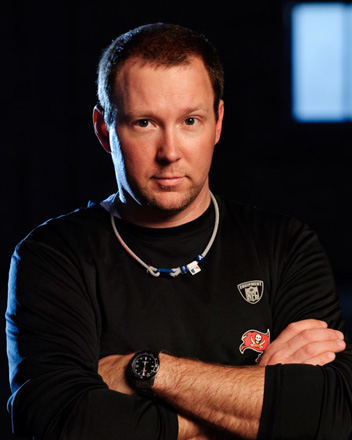
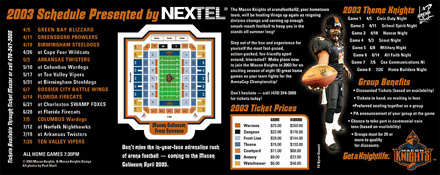
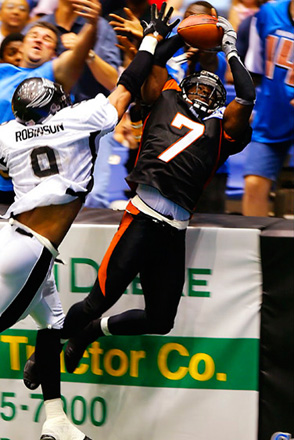
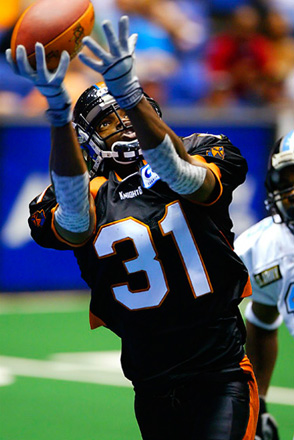
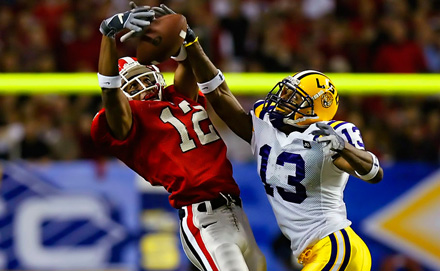
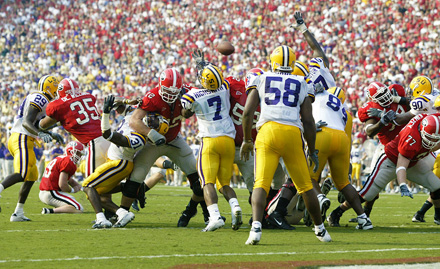

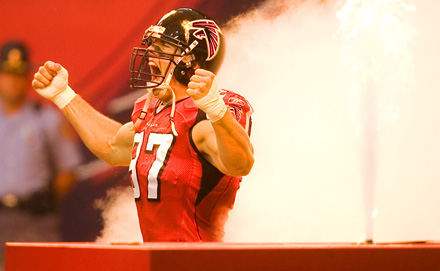
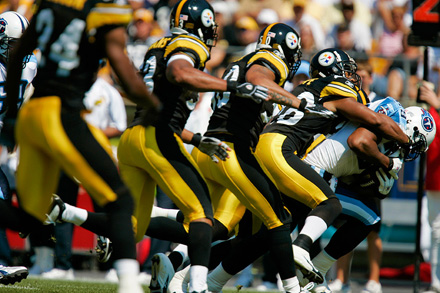
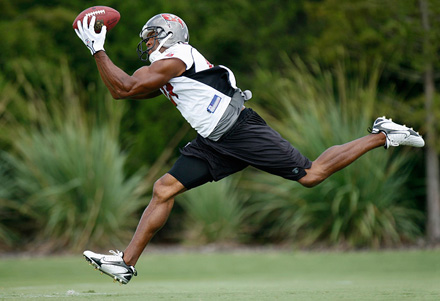
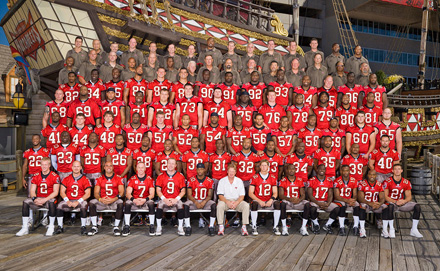
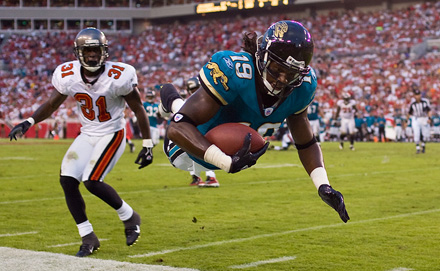
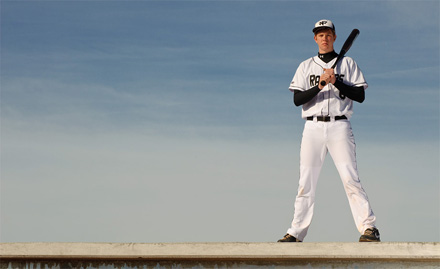
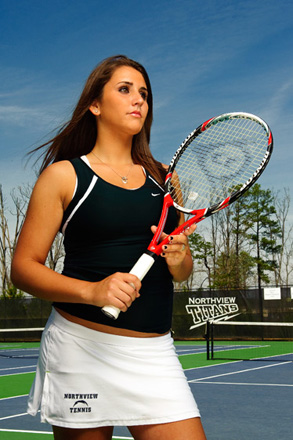
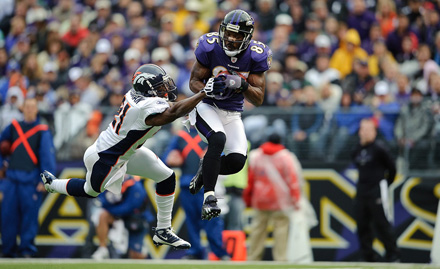
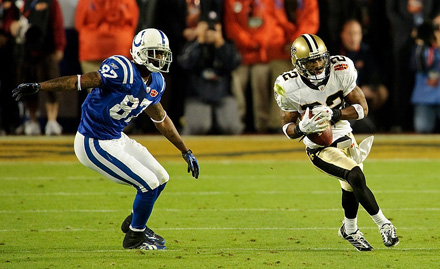
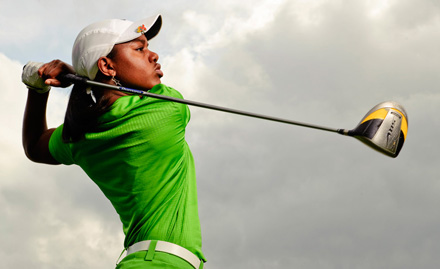
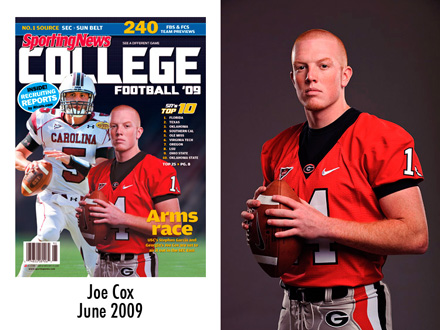
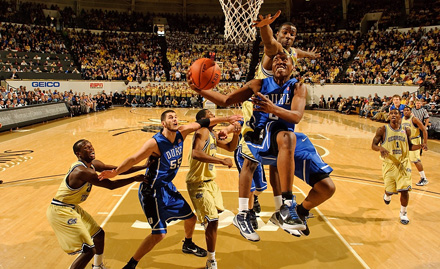
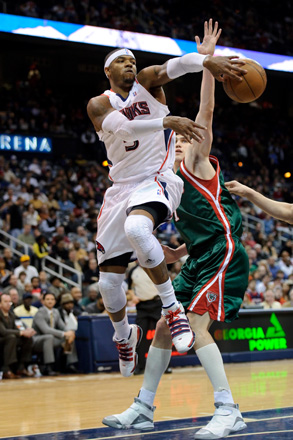
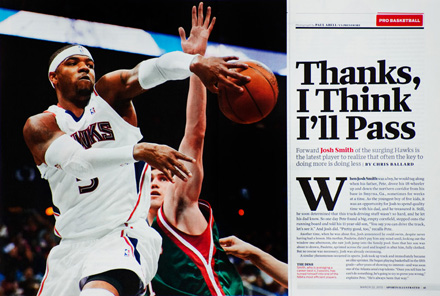
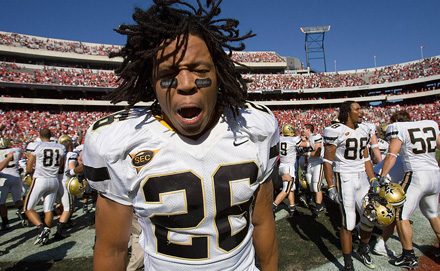
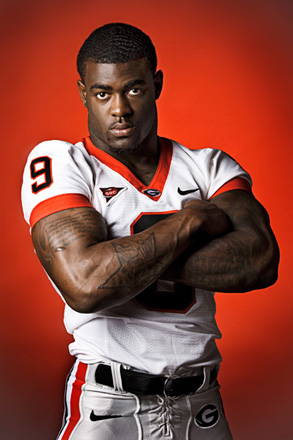
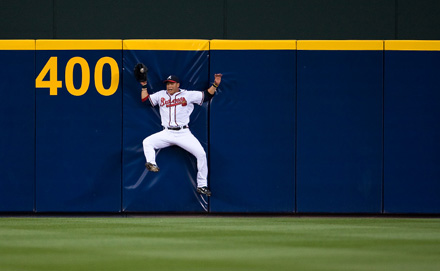
It was a fantastic read on your background and development in sports photography, until…
that stupid Derek Mason catch that pretty much started the unraveling of our season here in Denver. I know, they were never contenders in 2009, only pretenders, but didya have to remind me?!?!
Great background and insights though, thanks for stopping in and thanks to Brad and Scott for bringing you in. Next time, how about a little paragraph about a Bronco making a play instead of being played? :)
Paul, thanks so much for sharing your journey. I am with Jason though… it was a harsh reminder of Denver’s season going south.
Jason & Mike: Thanks for the comments, and Sorry… FYI: I was definitely rooting for Denver; They have my Georgia boys…
Abel, great entry!
I would like to know more about the DAM Solution you kept out of the blog.
More importantly, though, I just want to say thanks for this. I really got an insight to your workflow as you described how you prepare for a shot and taking what your position (on the field) gives you. You’re mental lists and the research you did prior to your attending the games have really opened my eyes. Focusing on what opportunities you have rather than worrying about what perspectives you didn’t is such a “nugget”!!
This is the meat of the matter. And you have shared it with all of us…THANKS
Daniel
I too am interested in the DAM solution reference.
Would love to hear more about your DAM. Is it an off-the-shelf product, self-developed or ? With 20 interns to help input, etc., it must be quite a system!
Very interested in the DAM solution as well…thanks for the great guest post!!
Cheers,
Scotty
Jakarta, Indonesia
Daniel:
Thanks for the comments… I will work on putting together something… It will not be nearly as long, but it will definitely be next week before I can get it done.
Paul
Daniel… Thanks
Paul
Paul, great story! I felt like I was reading a movie script. Your photography is awesome. I like the choice you made on your name, I am about to launch a new web site and I may have to use that idea. Thanks for sharing your life with us. I have a good friend (and customer) who plays for Tampa Bay, Ryan Simms. I started 2 years ago trying the sports thing by shooting th Shrine Bowl here in the Carolinas, man the game goes by faster when your on the field! Hope you continue all this success.
Ken! I just found out where Flounder’s is! I used to go to Gaffney (home of the giant peach butt) with my brother when I’d visit him at Gardner-Webb. If only we’d known the best seafood in SC was just a few more miles down the road… Maybe one of these days.
Cool! Yes we are about 20 miles south of the “butt” (don’t know what they were thinking when they built that). We are right in the intersection of I-85 and I-26. We were voted best in the Upstate and have been here 41 years this month. Would love too see one of you guys come in one day!!
Thanks Brad, You are the man!
Ken… Thanks…
Paul
Fantastic !!
Seriously worth reading it.
Great photographs as well.
Great stuff Paul. I didn’t want the story to end! Very detailed!
-Bob
Thanks for sharing Paul. Great read into some of the details in sports photography.
Thanks for writing this fascinating entry Paul. As a Bucs fan in the UK starting to cover British American Football it is really inspiring (also makes me green with envy) to read how the best have become so good. Would also be interested in your DAM solution for my ever growing archive.
Great post…I think your putting the mental thought process you go through in helps to show that it’s not just field access & equipment, you have to know the game, and keep involved…whether it’s baseball w/ runners on 1st & 3rd, no outs, will he sacrifice bunt? Where will he try to hit to advance the runners, etc…that’s a huge part of the job along w/ the research prior to the game.
Wow Paul!! I am SO proud of you!! You’ve done so much and such amazing work…you already know I’ve been a fan of yours forever (starting with the music!) and of course your wonderful work in graphics and photography. I continue to push upwards myself and success stories….especially from those I personally know such as you…. are just more MOTIVATION!
Have a wonderful day Paul!
*Robin
Robin:
I can not thank you enough… Yes, We have known each other for almost 20 years now, and your thoughts mean so much. From the days you all came to see us play to your thoughts on my work… This makes everything I do worth sharing.
More importantly, I think you know that I have never been an out-font type of person, so this was not very easy to do.
I have 2 assignments today: Joan Rivers & Hawks.
I will try to get back to this later this evening or first thing tomorrow.
Paul
PS… How are you guys adding your profile images?
Get a gravatar at http://gravatar.com Works on many websites/comment boards.
Good stuff there Paul, never heard your story. Not bad for a fellow Dawg grad. Now where are you going to get Scott to come shoot with us?? He would probably be more fun to work with than John Gruden!!
Hey man.. RC here… That was an awesome read!!!
For more info on Gravatars: http://www.scottkelby.com/blog/2009/archives/6212
RC, how do we add a photo to the comments box in the live webinars?
Hey Ken – You can sign up for an account at http://www.scribblelive.com and add a photo there. I think I saw RC have the Scribble site open in one window and the video feed in another window so he could see more of the comments coming in.
Oops, Thanks Brad.
RC… Thanks man. That truly means a lot, as it does from every person that left a comment here.
Paul
Paul, thank you for the inspiring post! I too am a graphic designer who unknowingly stumbled into the wonderful world we call photography. I love this so much and just CAN’T get enough of it.
I’m a cover designer for a small Christian publishing house just outside of Chicago and discovered photography almost four years ago while attending Photoshop world in Miami. (go figure)
Similar to your story I’ve been thrown into the deep end of things — learning the craft as I go, often spending crazy time retouching images to death and lets not forget the abundance of wisdom gained through making lots of mistakes. What’s been amazing are the incredible opportunities I’ve had to photograph people like Drew Brees, Tony Dungy, Kurt Warner, and even Phil Vischer (the veggie tales guy :) It’s been rewarding to see my craft improve — slowly but improving none-the-less.
Hearing about your roots in graphic design and seeing how it has helped focus the direction you have chosen for your business is exciting for me. I have had the hardest time figuring out exactly what it is that I love shooting more because I’m happiest when I’m looking through my viewfinder and making photographs. Quite honestly, it doesn’t seem to matter what it is that I’m shooting, as long as I’m shooting if that makes any sense at all?
I recently started exploring action photography and have had the hardest time figuring out a good base of settings for using AF on my D700. I realize that mastering action photography requires years and years of hard work and sweat but it always helps getting small nuggets of gold from pros who live and breath this stuff.
Would you mind walking us through the settings used for AF on your D3 when you are shooting a football game?
for example:
Continuous focus with (a4) Focus tracking with lock-on set to “Short”.
AF-C priority set to “Release”. (or release + focus)
Dynamic area AF set to 9 or 16 points? (Haven’t seen much love for 51-3D tracking
Do you use the AF-On button for AF activation.
AF point selection AF11 or AF51 (guess there are a lot of those little suckers to get through)
Lastly, I know this may sound stupid but… when looking through the viewfinder are you generally moving the focus selector around for the composition you want or do you just keep it smack in the middle and let the AF track your subject.
Sorry for all the questions — I’ve been scouring the web and there seems to be so many opinions out there as to what works best.
cheers and thank you again for sharing your story!
Stephen… I am going to do a small follow-up below… I will do my best to touch on your questions.
Paul
Hi Paul,
This is a very inspirational story!! I am so interested in just about any forms of photography and the most important message I would like to emphasize is something you said… Get out and shoot!!
Thanks so much for being a guest blogger!
Paul this was a great read. The information that you presented was invalueable. I have a few questions to ask. I’m trying to get to that next level and I’m in my thirties. How would you go about being recognized, so that I can break into the field? With my age it’s tough to be an assistant, where alot of you photographers learned the profession. I get a lot of positive feedback from my photos and have won some awards. It’s just frustrating to get any access to anything unless you are working for someone. Again great post and I will be frequenting your website for insight and motivation.
Phil… Great comment, and something I probably could have touched on a little more. However, with the length it was getting, I had to cut it somewhere.
For what it is worth, my road to photographer never came through assisting anyone. For good or bad, everything I know was learned though research, trial-and-error and my creative friends. I learned a long time ago that you should surround yourself with people that know more than you, and when they are cool guys/gals, it makes it even better.
I got into this very late, myself, and there are times I wish that I would have started this sooner. I never had the opportunity to intern for anyone, other than CNN as a designer. So, that has nothing to do with learning photography.
I can not tell you how many road-bumps I have hit or closed doors I have come to. There are too many to count, but I have tried to pattern what I am doing as a photographer guys that I have seen successful in this industry and the music industry. It is just something you have to keep working on and keep pushing to get better.
For me, I am never satisfied, so that is the one thing that drives me… All I have to do is look at the work of Joe McNally and guys like that; it is a quick reminder that I do not even know 1/100th of what they know. Will I ever get there? Who know, but I am sure going to fight like mad to try.
Most importantly, we just need to shoot; Opportunities are rare, as a lot of the decision makers never want to change something that is working. However, when the opportunity presents itself, you must have enough experience under you to come though at the level expected. If you are not ready, it could take you down a notch or two. I have been both places, and had to fight my way back though hard work and lessons learned.
Paul
Wow, what a inspiring story!
You have one of the nicest jobs on earth.
If you ever need some help, let me know ;-)
Take care from Amsterdam..
Go Bucs!!!
Paul,
Love your stuff, ESPECIALLY that Derrick Mason catch for the touchdown. I’m a RAVENS fan, as you can probably tell. To all the BRONCOS fans on this thread, SORRY……..that’s why the game is played.
Appreciate your story-telling pertaining to how you got the various football shots. Quite informative. Keep on rocking, man…
Cheers.
Ade… Thanks man!
I enjoy shooting in Baltimore; Nice stadium!
Paul
Great stuff, I love reading the entries that relate to sports photography. Always makes me wish I could get that access, but as an amatuer I just stick to what I can get, maybe someday. Love the shots and appreciate the insight.
Michael:
The access is great, but go back and study the image of David Boston from practice. To me that image speaks a lot, and it is different from most football images you will ever see.
I did have access to a place others did not, but you could go out and practice shooting stuff like this for your local high school. The key with that shot is I parked myself in one place until I made the image I wanted. However, it is important to note, that this was after I had the shots I needed for our daily web gallery of practice.
There were other areas on the field that have even better light, but this pic was where they were running though drills. I opted for the greenery versus a white building or the main complex in the background.
Shooting the Super Bowl was nice, but your access is very limited, and to make images that stand out at an event like that is nearly impossible.
Paul
Thanks for the insight into your work Paul. It is very nice to see some great examples of shots taken at 1/250 of a second. I took thousands of hockey shots this past winter at f2.8 and 1600 ISO and shutter speeds of 1/250 to 1/800. I’d love to be able to get it up to 1/1000 where the action REALLY freezes, but most arena lights are horrible! Great work!
Michael:
Back in those days (2003), it was all I could do… I shot for two years like that, and my last two, I shot on strobes. That was an interesting feat, but one that I think truly prepared me to shoot basketball on strobes.
The two years I shot handheld at 1/250, I had to learn to shoot in a panning motion. I never liked the blur I got even when coming towards me.
In 2005 & 2006, I mounted 8 Elinchrom 600RX strobes high in the back of the arena. Our catwalk was not even across the floor, so mounting them in the back of the arena was my only option.
Paul
Great Post Paul !! Very interesting !!
Following up…
I want to thank everyone for their comments… I know that reads this Blog is at different levels or stages in their careers. For some, it is just a hobby; for others it is their life. Either way, I truly appreciate your taking time to read my entry. Believe me when I say, following in the footsteps of the others that have come before me is very difficult, as you never know how it will be received.
Stephen asked…
Would you mind walking us through the settings used for AF on your D3 when you are shooting a football game?
1. Focus tracking with lock-on:
Mine is turn “Off” 99% of the time… For football, I have this setting turned off on all of my cameras: D3s, D3 & D700. The D3s has 5 adjustments, versus the 3 that the D3 & D700 have. Early on when shooting football, I was having issues with the focus taking too long to grab, and I was not sure what the problem was. I changed from Canon to Nikon in January of 2009, so this past football season was my first shooting all Nikon; In 2008, I shot half Nikon, half Canon.
I found that turning it off offered me the best results. As I understand this setting on the D3, Long, Normal & Short have to do with the amount of time the camera’s autofocus system waits to change the focus to something that moves in front of the main focus point. What I found troubling with these settings, when shooting football, was that the camera took too long to focus on a receiver down field if I was shooting the QB during his drop-back. By turning the setting off, I do not have to worry about the cameras AF speed. The camera focus very fast in this mode. However, it is worth noting that you must follow the action very smoothly, or you will have a lot of out of focus images.
NOTE: I use the back button for Auto Focus and the Shutter Button only to fire the shutter. I know other pro shooters that think I am crazy for using this setting, but it just works for me. I think they do a better job of using their thumb to come off the focus button than I do. If you are good with that, then Slow or Normal may be your answer, as it will certainly give you better frames when a linebacker crosses your frame momentarily. The way I have my camera set, my AF will jump to him immediately, and as soon as he is gone, it jumps right back where I have the Focusing Point pointed.
NOTE 2: Having said what I said above, there are times that I might turn the setting to Normal or Short, but it is based on how my subject is moving. If they are stationary or moving slow, and there is no possibility of needing to focus to an area 20 yards away within a half second, I will adjust accordingly… Knowing how the setting works is Key. You just have to commit this to memory and think through before you shoot.
2. AF-C priority:
I have mine on “Release” It work for me, but others might find “Focus” works best for them…
3. AF-S- is set to “Focus”
4. Dynamic Area AF:
I do not use the 51 or 3D, but I have been told it works well for following birds in flight or anything moving against a solute background… Not sure how true, but thought I would pass it along. I know Scott has other friends that might be able to share more info on the 51 & 3D. I use Center point, expandable to 21 points. I just found it works better for me.
5. AF activation: I have this setting turned “off” on my main cameras. However, I have typed around with setting it to “on” for my around the net camera and my 70-200 camera. For the most part, I Zone Focus my around the net camera, but the more I shoot games at night, the more I have toyed around with using the autofocus. Most of the SI guys Zone Focus and tape it down… I see no need in having the Shutter Button focus when I use the back AF button, and I am beginning my shooting by holding it.
My good friend Dale Zanine has his set to “on” for his 70-200, and that is why I began trying it. Sometimes when you have to make a quick change, you know that the camera is trying to focus if it is firing. Overall, I think I like Dale’s approach better and will probably continue to use that setting for my 70-200 & 50 around the neck.
6. AF point selection AF11 or AF51 (guess there are a lot of those little suckers to get through)
Mine is set to 51, but I can not honestly say that I have changed it. The setting that made the most impact on my shooting was the Continuous Focus setting.
“Lastly, I know this may sound stupid but… when looking through the viewfinder are you generally moving the focus selector around for the composition you want or do you just keep it smack in the middle and let the AF track your subject.”
This is a good question, and I will have to tell you it varies from image to image. When shooting moving subjects, I just leave it in the middle, and to my knowledge, most everyone I know does. When a subject is stationary, I will definitely move it. However, I am really trying to gain the skill of manually focusing the camera. I think we all rely on autofocus too much; I have found times when I missed a shot because I did not have time to adjust the focus points… The guys that have been doing this for years will manually focus in a second if it is the difference between getting a shot and missing one.
On the DAM Solution I did for the Bucs & Braves… I will work on that and have something soon. This is Scott’s site, so I do not want to just intrude on everything… I suppose I can do a follow up with it in this thread, but my fear is that it will get lost in the shuffle.
Thanks again,
Paul Abell
Paul, thank you so so much, I can’t tell you how much I appreciate your candor and willingness to share how you work. Especially all the depth you went into regarding AF settings. I had met Michael Hebert, (staff photog for the Saints) while shooting Drew Brees for a cover and he was such a gracious guy. I obviously didn’t waste any time and asked him what he did for AF — he promptly replied that he focuses manually for everything but point and shoot stuff at events etc. I of course being the pup I am was totally floored by the idea of getting sharp images shooting at a moving target and focusing manually. Guys like that have paid their dues and worked so hard to get where they are and I have enormous respect for them.
Thank you again and best of luck with your new venture. Do you ever miss graphic design?
Stephen:
I do not miss design much… I actually began to realize that I loved design because of photography.
I can not say that I will never go back to it, but I suspect photography is where I needed to be.
I’d love to see your work…
Paul
I hear you — I haven’t heard someone put it that way but it makes a lot of sense. And you definitely belong where you are at right now. This is goofy but I don’t really have any of my work readily available to view. I threw together a quick PDF and would be happy to send it to you via email. You can get hold of me at mercyarts@comcast.net
Stephen
Great story and fantastic photos!
Wonderful post paul.
Love your site!